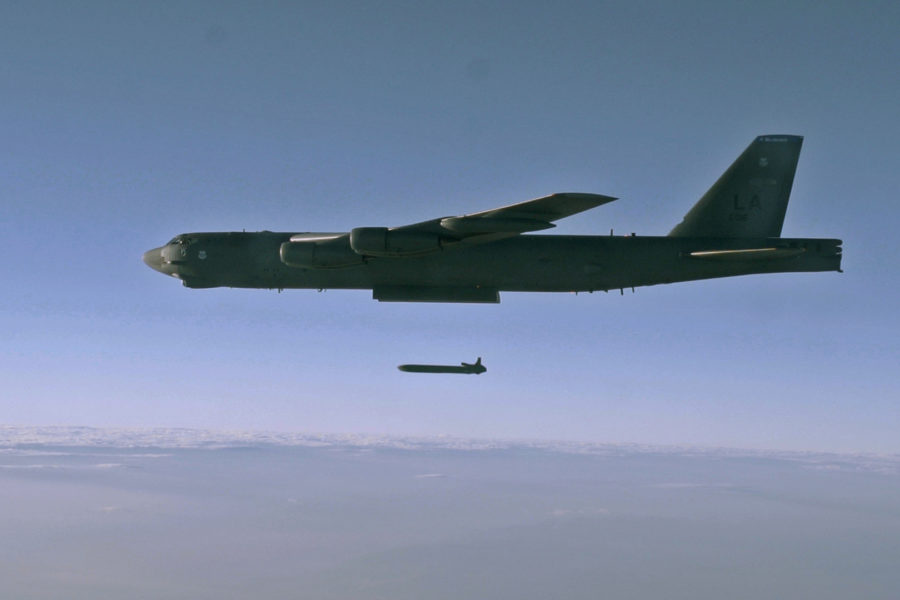The Air Force awarded a $2 billion contract to Raytheon Missiles and Defense to engineer and develop the Long Range Standoff (LRSO) weapon system, the service’s next-generation air-launched nuclear missile.
The deal, announced July 1, is for the engineering and manufacturing development phase, which is set to last through February 2027 as Raytheon will continue to develop the cruise missiles, with a goal of demonstrating full production readiness. The contract was the result of a sole-source acquisition.
“The team’s extensive work—with a major focus on digital engineering—and close collaboration with the Air Force throughout the technology maturation and risk reduction phase, has guided us to an EMD contract award,” said Paul Ferraro, vice president of Air Power at Raytheon Missiles & Defense, in a statement to Air Force Magazine. “Transitioning to the EMD phase is a big step toward delivering this critical capability to the Air Force to strengthen our nation’s deterrence posture.”
The announcement comes just a few months after the Air Force announced in April that the service was proceeding with Raytheon as the highly classified program’s “sole source contractor” on the technology, maturation, and risk reduction (TMRR) phase, removing competitor Lockheed Martin.
Raytheon’s TMRR deal was worth $900 million and was expected to run through 2022. The Air Force said at the time that it had “high confidence” in choosing the Raytheon missile design due to the success of the program.
The LRSO is slated to replace the nuclear AGM-86B Air-Launched Cruise Missile beginning in about 2030, equipping the B-52 and B-21 bombers as one-third of the nuclear triad. Its range is expected to be in excess of 1,500 miles, and first flight could come in 2022.
The Air Force’s 2022 budget request included $609 million for the program. The Congressional Budget Office estimated in 2017 that the LRSO will cost $10 billion to produce 1,000 missiles, for a unit cost of $10 million apiece, but the Arms Control Association has estimated the cost could be closer to $20 billion.
The LRSO represents just part of the Air Force’s nuclear modernization efforts. The Ground-Based Strategic Deterrent, being developed by Northrop Grumman, is scheduled to have its first flight in 2023. The GBSD is expected to achieve initial operational capability in 2029 and full operational capability with 400 missiles seven years later in 2036.
